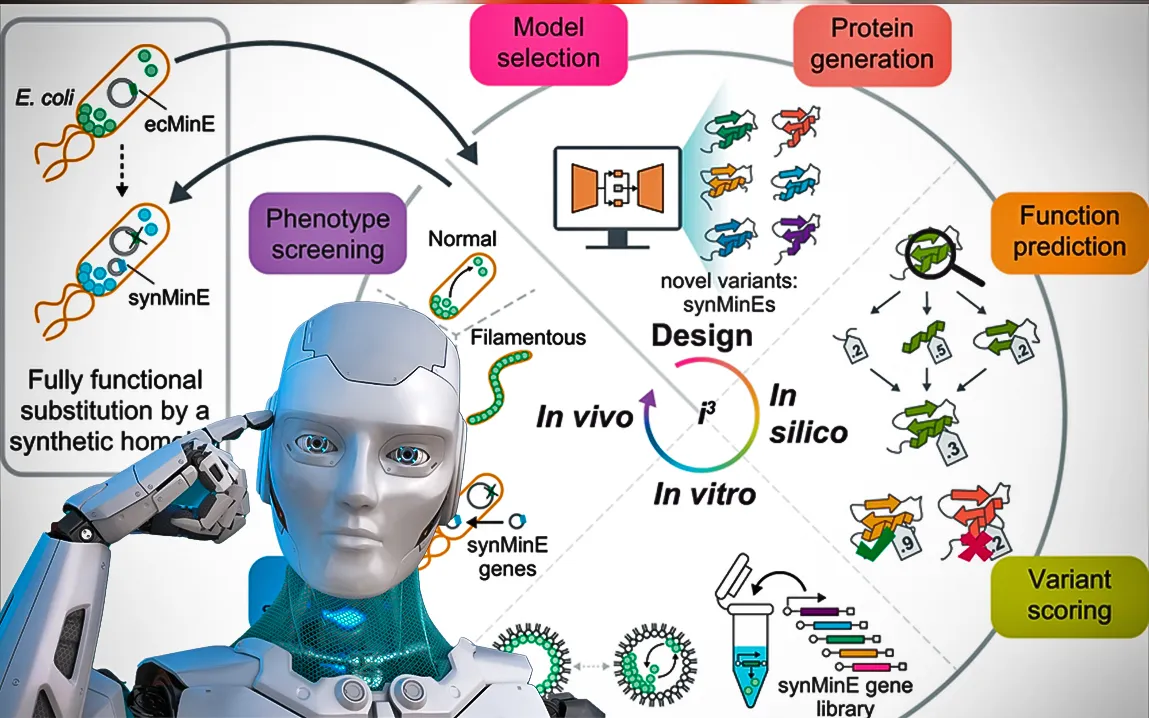So far in 2024, an unprecedented trend—a host of new proteins—have been designed with the help of AI. Major gains in machine learning and structural biology have, for the first time, allowed AI to go the extra step: not merely predicting the structure of an already-existing protein, but actually designing completely new proteins that could alter medicine, bioengineering, and environmental science. But the real question among all stakeholders is, “Do these AI-designed proteins actually work in the real world?” Let’s explore perspectives coming from a variety of news sources along with scientific commentary.
The Power and Promise of AI-Designed Proteins
AI-designed proteins have now become a game-changing intervention across many fields. Using artificial intelligence diffusion models and most commonly language-based algorithms similar to ChatGPT, researchers design protein structures that have never existed. Such models find intricate folding patterns and go ahead to generate functional proteins in a remarkably shorter period of time than earlier lab-based methods could. According to reports in *Nature*, the AI-designed proteins are under test in laboratories across the globe with mixed results.
For example, AlphaFold from DeepMind probably represents one of the most powerful tools in this particular field. It expanded the capacity to predict protein structures at an unprecedented level. New entrants include Meta AI, which will be making predictions for millions of new proteins. The speed at which this is happening has generated optimism for breakthroughs in drug development, innovative vaccines, and even biofuels derived through sustainable means. Such optimism is underscored by new competitions in protein design, such as the “Evolved 2024” hackathon, which also promises to further accelerate these developments through substantial prizes and collaboration opportunities for researchers.
Reality Check: Do AI-Designed Proteins Work?
But one key question remains: whether such AI-designed proteins can really work in practical, real-world situations. A study published in *Nature* stressed that in real lab tests only an infinitesimally small fraction of the AI-designed proteins actually worked as they were supposed to. An example of such might be a competition where less than 5% of the designs tested actually bound their target molecules. This is because the process of applying computational models to functional biology is inherently complex.
This in part comes from the deficiencies of AI models used up to date. Proteins are extremely sensitive to their context, and discrepancies in AI predictions, even by a few percents, result in ineffective or non-functional proteins upon synthesis. The road to further advance, according to some experts, lies in further developing AI systems and an integration of those with biological data.
Biosecurity and Ethical Concerns
Yet with such proteins’ synthesis becoming more and more viable, there are also biosecurity and ethical concerns. Fears exist that technologies of this sort could be used to make harmful biological agents. In an effort to get ahead of such risks, experts such as Dr. David Baker from the University of Washington are proposing “barcode” systems that tag synthetic proteins so they can be traced back to their origin should biosecurity incidents arise. The added advantage of this approach is that all designer proteins would leave an audit trail because accountability means safety.
There is also continued debate about the need for international governance and regulation. While the EU has begun to establish a framework, such as the AI Act, with respect to the regulation of AI applications, specific regulation regarding synthetic biology and protein design remains scant. The scientific community is advocating for broader-based international regulations that would try to avoid any misuse of the technologies while their benefits are opened to therapeutic and environmental uses.
Scientific Competitions: Drivers for Innovation and Collaboration
Protein design competitions, it seems, are fertile ground for innovation, despite challenges. Events such as “Bits to Binders” and the “Rosetta Winter Games” foster breakthroughs and collaboration among interdisciplinary teams of biologists, computational scientists, and AI researchers. Such contests make possible the testing of new AI algorithms in protein design, bridging large areas of science from biochemistry to natural language processing.
Some critics counter that the competitions may be broadly focusing research on the meeting of specific short-term goals rather than investigating more general and complex biological questions. There is a lurking fear that such events may actually divert the research away from solving some fundamental problems, such as protein stability or the making of versatile enzymes, in case the metrics for judging these competitions become overly restrictive.
Outlook: A Mixed Bag of Optimism and Skepticism
The journalistic opinions vary. Several journalists, especially those from *Chemical & Engineering News* (C&EN), show confidence in the scalability and effect of these AI technologies. They say that the past few years have really been pivotal; finally, AI has merged with biochemistry on a truly transformative scale, not unlike its upending of natural language processing. According to experts like Noelia Ferruz, this merging of the two fields is the most critical time for biotechnology.
On the other hand, caution is advisable. Reports have surfaced on how AI, while designing thousands of new proteins, actually translates into stable, functional molecules in fitful ways. The very variability underlines the need for ongoing refinements in AI models and closer integration with empirical research methods.
While AI-designed proteins have huge potential, the path from computation-based models to actual and effective biological solutions has been fraught with technical, ethical, and logistical obstacles. Determined to forge ahead, what is really needed would be a balancing act—one that tempers optimism with caution and rigorous testing so that innovations are safe and of benefit.
Conclusion
The story of AI-designed proteins remains in its infancy, and 2024 will be an important year for technological advances that bring ethical and practical considerations along. Above all, it is now timely that scientists, policymakers, and technology firms join forces to establish frameworks with which the maximum potential of these technologies can be assured while reducing risks.
More comprehensive coverage by *Nature*, *Singularity Hub*, and *C&EN* gives an in-depth look at the analysis and updates about this pioneering area.



